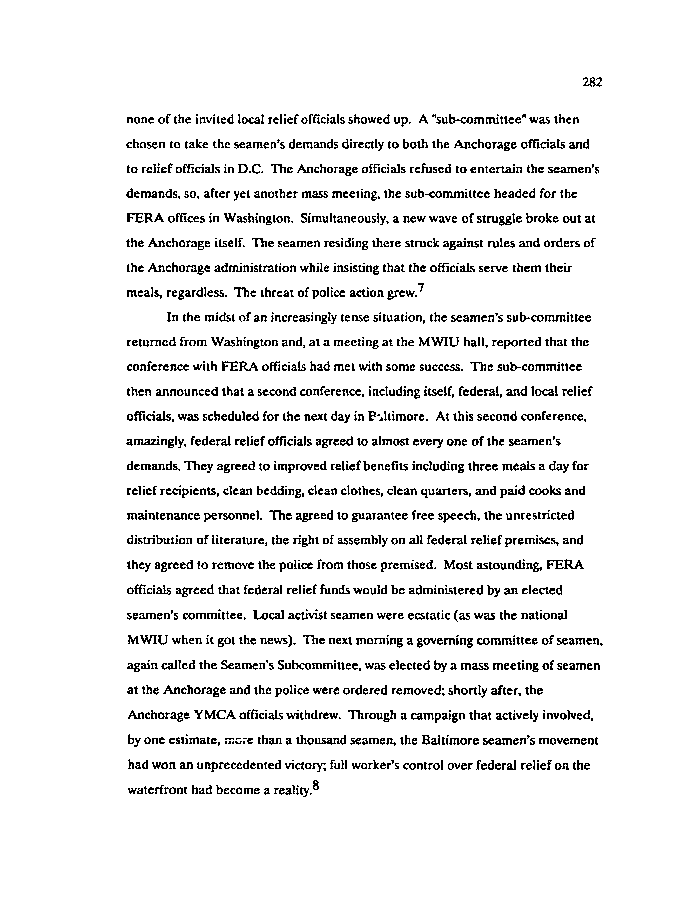|
282
none of the invited local relief officials showed up. A "sub-committee" was then
chosen to take the seamen's demands directly to both the Anchorage officials and
to relief officials in D.C. The Anchorage officials refused to entertain the seamen's
demands, so, after yet another mass meeting, the sub-committee headed for the
FERA offices in Washington. Simultaneously, a new wave of struggle broke out at
the Anchorage itself. The seamen residing there struck against rules and orders of
the Anchorage administration while insisting that the officials serve them their
meals, regardless. The threat of police action grew/
In the midst of an increasingly tense situation, the seamen's sub-committee
returned from Washington and, at a meeting at the MW1U hall, reported that the
conference with FERA officials had met with some success. The sub-committee
then announced that a second conference, including itself, federal, and local relief
officials, was scheduled for the next day in Baltimore. At this second conference,
amazingly, federal relief officials agreed to almost every one of the seamen's
demands. They agreed to improved relief benefits including three meals a day for
relief recipients, clean bedding, clean clothes, clean quarters, and paid cooks and
maintenance personnel. The agreed to guarantee free speech, the unrestricted
distribution of literature, the right of assembly on all federal relief premises, and
they agreed to remove the police from those premised. Most astounding, FERA
officials agreed that federal relief funds would be administered by an elected
seamen's committee. Local activist seamen were ecstatic (as was the national
MWIU when it got the news). The next morning a governing committee of seamen,
again called the Seamen's Subcommittee, was elected by a mass meeting of seamen
at the Anchorage and the police were ordered removed; shortly after, the
Anchorage YMCA officials withdrew. Through a campaign that actively involved,
by one estimate, more than a thousand seamen, the Baltimore seamen's movement
had won an unprecedented victory; full worker's control over federal relief on the
waterfront had become a reality.
|

